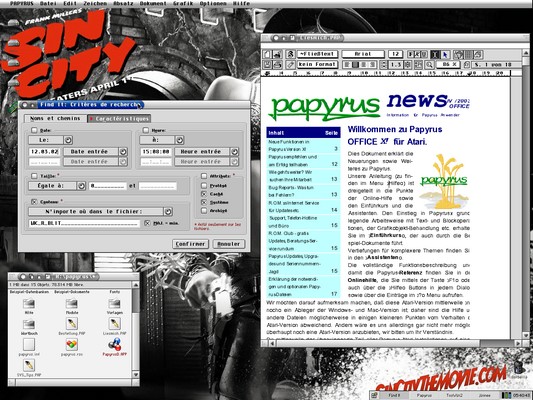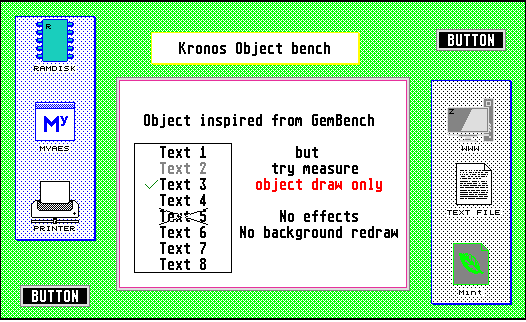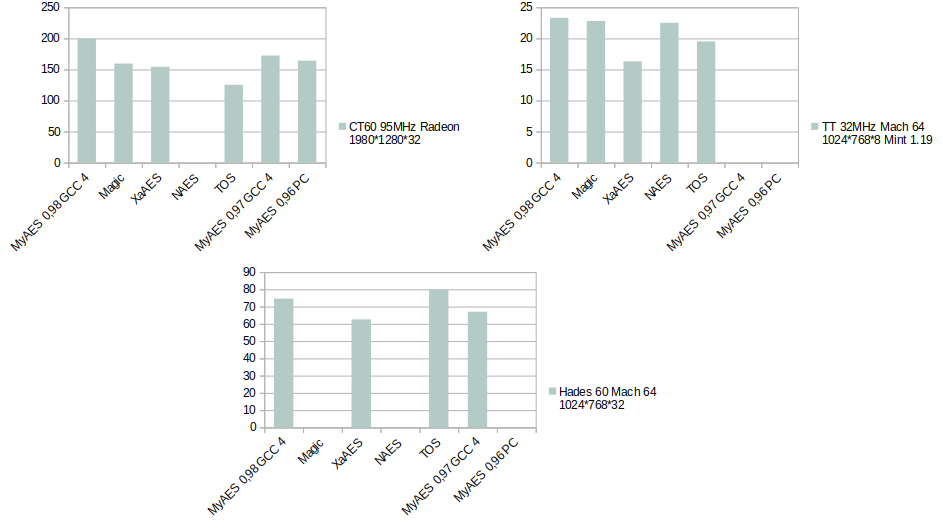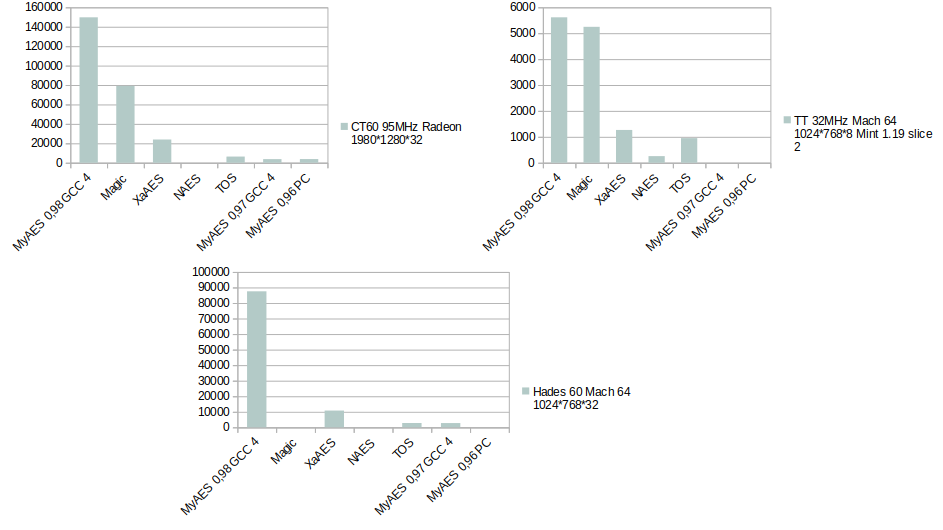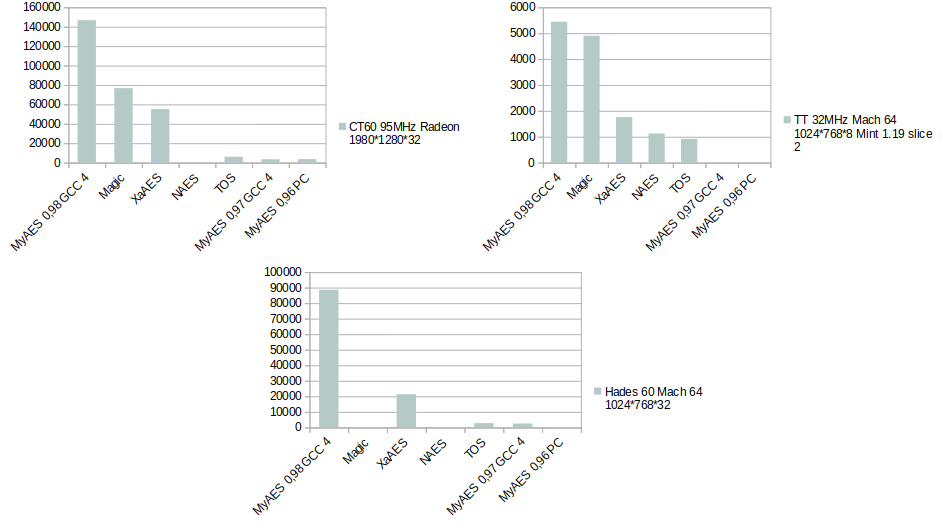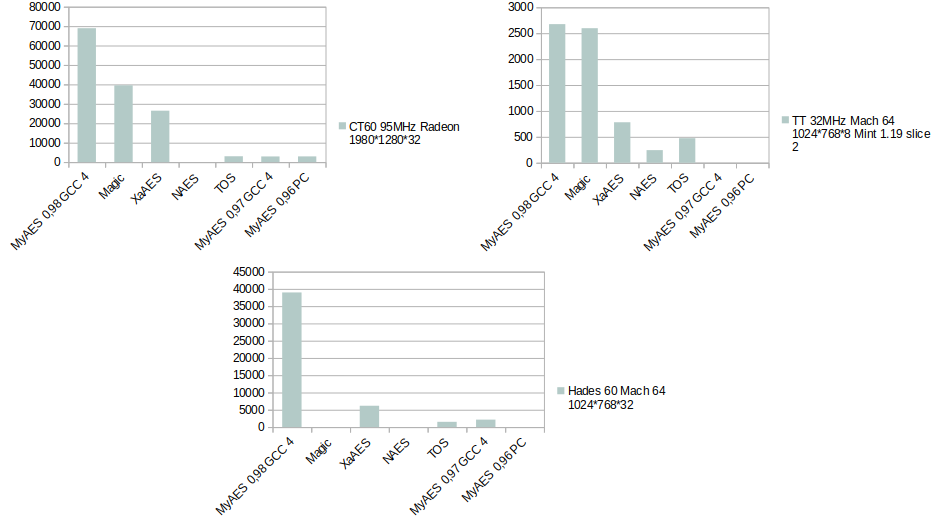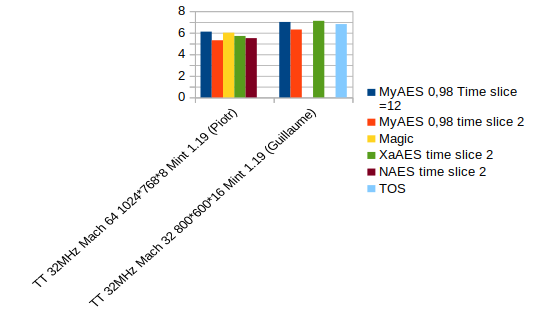 |
Support of thread creation by AES à la mode Magic via
shel_write() it is thus to my knowledge the first AES
supporting threads under Mint, I recall that this thread
shares the memory area of the client, it has its own stack
managed by the calling application, the calling application
and the thread work in a concurrent way as 2 independent
programs, it is thus very different from the gemdos
functions Pfork() and Pvfork() provided by Mint, it is thus
imperative to have a "safethread" code and to use libraries
capable of that if the code used possibly can be used in a
concurrent way like the functions mt_aes to call VDI and AES |
| Option "app_single" is an option which can be useful with
the rather old applications which like to monopolize the
mouse and were generally conceived under TOS, this option
makes it possible to have only this application with the
screen like under TOS, this option is to put typically in
the file app_conf.cnf file followed by the name of the
application to be managed, for example "app_single WORDPLUS"
the wordplus application will be launched in this mode,
applications of this kind include Pure Pascal, Degas Elite,
Gembench (for a more accurate comparison with TOS, gembench
can work without any major problem in a multi-application
environment) |
 |
 |
Option "focus_priority", allows to choose between 2 modes
of operation of the AES, if the value is false then no
preference is made between applications, this mode is
similar to the other AES, if the value is true then there is
priority to the application that is in the foreground, the
other applications are slowed down voluntarily in the AES
(outside the priority is not modified), MyAES considers that
the application in the foreground must have the maximum of
available resources and that a background task does not have
to load the system excessively. By default this variable is
true, this can be set in myaes.cnf: "focus_priority=true". |
